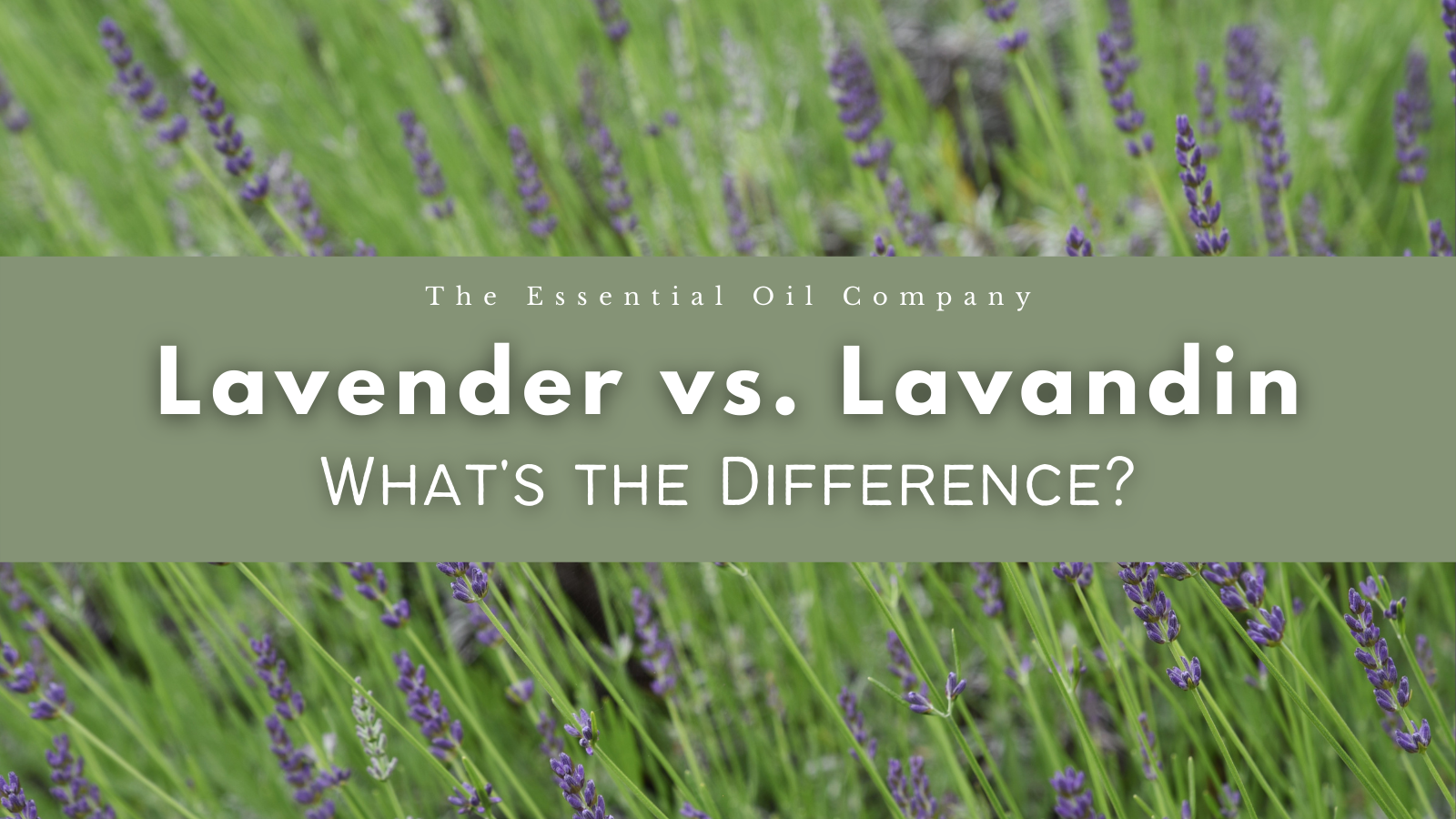
Lavender vs. Lavandin: What's the difference?
Lavender may be the single most popular essential oil and is likely one of the first oils we add to our collection when we start to learn about aromatherapy. Lavender becomes a favorite and most used essential oil for many because of its versatility, unique and pleasing aroma, and its powerful calming properties. Like many other essential oils, there are many varieties in the lavender family, each with different properties that make them suited for different uses. There are actually over 40 different species of lavender in the genus Lavandula, but only a few of these species are used for essential oil production. One of these species, known as Lavandin, is a hybrid species that has some differences from the non-hybrid lavender that may be more familiar to us. To highlight the differences between Lavender and Lavandin, we will focus on the most popular Lavender variety used for essential oils, True Lavender (Lavandula angustifolia).

Lavandin (Lavandula hybrida) is a hybrid species of lavender resulting from the cross between Lavandula angustifolia and Lavandula latifolia, species we know as True Lavender and Spike Lavender. Lavandin plants were a naturally formed hybrid that came from insects carrying pollen from higher altitudes, where True Lavender grows, to the lower altitudes, where Spike Lavender is typically grown. When the unique benefits of this cross were discovered, the cultivation of Lavandin became commercialized. Being a hybrid means that Lavandin has characteristics that come from both of the species that make it. The plant itself typically has longer stems than True Lavender, reaching over 24 inches. It also has a more spike-shaped flower head with grayish purple buds. While the aroma of Lavandin is similarly sweet and floral to that of True Lavender, it has a more intense camphorous and herbaceous quality. This scent makes Lavandin useful in aromatherapeutic and fragrance applications but its flavor doesn’t work as well in culinary uses. Lavandin Essential Oil is known to have a more stimulating effect when used in aromatherapy, rather than the sedative quality found in Lavender Essential Oil. It is generally more suited to fragrance applications and is popular in soap making, cleaning products, and air fresheners.

True Lavender (Lavandula angustifolia) is arguably the most popular of the Lavender species that are commonly used for essential oil production. This species is native to Mediterranean countries such as Spain, Italy, Croatia, and France. It is sometimes called High Altitude Lavender because of the locations in which it is cultivated. The altitude at which Lavender plants are grown can affect the percentage of esters it contains. Linalyl acetate and other esters help contribute to the soothing properties of True Lavender Essential Oil. True Lavender has stems that reach around 24 inches long with flowers that range from pinkish to dark blue-purple in color. This species of Lavender, both plant and essential oil, can be used for flavoring and it is especially popular in pastries and desserts. When used in aromatherapy, True Lavender Essential Oil can help calm and balance emotions while decreasing anxiety and stress. It can also work to soothe coughs and respiratory distress as well as ease the pain of headaches. The calming properties of True Lavender Essential Oil extend to topical application. It can help relieve dry and itching skin while reducing inflammation and encouraging quick healing. The aroma of True Lavender is highly regarded in perfumery, soap, and body care products.

Time to Unwind Diffuser Blend
Ingredients
- 5 drops of Lavender Essential Oil
- 3 drops of Chamomile Essential Oil
- 2 drops of Ylang Ylang Essential Oil
Instructions
Add water to your diffuser up to the fill line. Add drops of the essential oil blend. This diffuser blend recipe is formulated for a 200ml ultrasonic diffuser. Adjust the amount according to the size and directions of your diffuser.

Calming Relief Foaming Bath Salts
Ingredients
- 2 oz of Unscented Liquid Castile Soap
- 1/2 oz of Jojoba Oil
- 2 cups of Course Mineral Sea Salt
- 1 cup of Epsom Salt
- 30 drops of Lavender Essential Oil
- 20 drops of Clary Sage Essential Oil
- 20 drops of Rosemary Essential Oil
- 10 drops of Peppermint Essential Oil
Instructions
Add coarse sea salt and Epsom salt to a large bowl and mix thoroughly. Add castile soap, jojoba oil, and essential oils to a small bowl and stir together until well combined. Add liquid mixture to salts and stir thoroughly until the mixture is fully incorporated and the salt seems to be evenly coated. Scoop into airtight containers for storage.
Directions
Add about ½ cup to a warm bath and stir to dissolve.

Stimulate the Mind Diffuser Blend
Ingredients
- 4 drops of Lavandin Essential Oil
- 2 drops of Frankincense Essential Oil
- 2 drops of Grapefruit Essential Oil
- 2 drops of Sweet Basil Essential Oil
Instructions
Add water to your diffuser up to the fill line. Add drops of the essential oil blend. This diffuser blend recipe is formulated for a 200ml ultrasonic diffuser. Adjust the amount according to the size and directions of your diffuser.

Renew and Refresh Deodorizing Room Spray
Ingredients
- 4 oz Amber Glass Bottle with Spray Top
- 2 oz of High Percentage Alcohol
- 2 oz of Distilled Water
- 20 drops of Lavandin Essential Oil
- 20 drops of Lemon Essential Oil
- 20 drops of Tea Tree Essential Oil
Instructions
Add essential oils and alcohol to the 4 oz glass bottle. Fill the rest of the bottle up with distilled water. Attach the spray top and shake until all the ingredients are well combined. Spray on soft surfaces in the home to deodorize and refresh the scent.
You may also enjoy...
- Lavender Species: 3 Types of Lavender Used for Making Essential Oil

- Lavender Essential Oil Benefits & Uses




